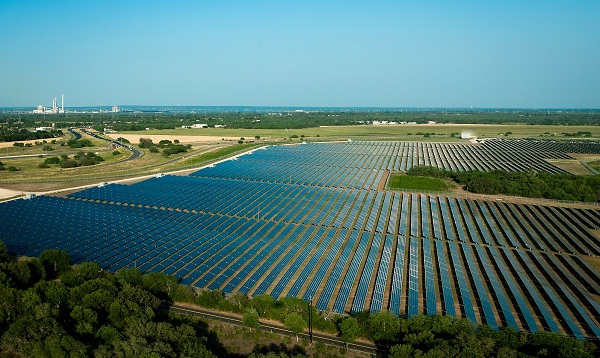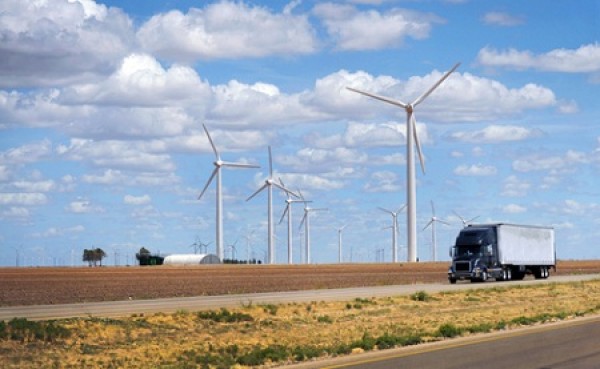Summer is here, and that means it’s gonna get hot in Texas, where fast-growing energy demand combined with extreme weather has at times challenged the ability of the state’s power plants to keep up, sending prices soaring. One way out of the trouble? More solar PV, according to a new study.
True, the study [PDF] was paid for by the Solar Energy Industries Association (SEIA) and the pro-renewables group Energy Foundation. And true, additional power of any sort would make life easier and less costly for Texas grid operators, power utilities and consumers through the endless days of 100-degree-plus temperatures that keep air conditioners roaring.

But The Brattle Group found solar could have been a uniquely apt answer to the state’s energy woes during the epic hot summer of 2011 — suggesting a path forward as energy demand continues to rise.
“Since solar PV can be deployed in a highly decentralized manner (as compared to utility-scale generation), requires little lead time, and generally does not face siting or other substantial regulatory hurdles, solar PV can be effective in offsetting the potential effects of extremely high prices,” the report said. “While high prices, in theory, attract new entry, in many cases, there are significant barriers to entry such as difficulty in permitting and siting and lack of cost-effective local infrastructure. Thus, solar PV may be effective in reducing the effects of sustained high prices in areas with limited transmission access and where siting larger energy facilities is a challenge.”
The report went at the possible impact solar could have had in summer 2011 in two ways: by overlaying PV’s contribution onto historical data, and by building models of the electricity market and then factoring how the presence of differing levels of PV might have shifted cost outcomes.
“We estimate that adding 1,000 megawatts (MW) of solar PV could have reduced average wholesale energy prices by approximately $0.6 per megawatt-hour (MWh); 2,500 MW of solar PV by $1.5/MWh; and 5,000 MW by $2.9/MWh. This would have lowered total wholesale energy payments by $155-$281 for each MWh of solar PV generation,” the report concluded.
But that’s not all. “Avoiding fuel, operations and maintenance costs associated with fossil fuels plans could have saved customers an additional $52/MWh,” kicking the full value of PV to customers up to $520 million, the SEIA said in a statement released with the report.
Brattle didn’t get into the cost side of the equation, but solar has been on a steep cost decline in the past few years. Meanwhile, the economics of wind figure to become less attractive if the federal production tax credit isn’t renewed soon — and wind has been a chief source of new power in Texas in the past decade.
As of the end of 2010, Texas had more renewable energy generating capacity, excluding hydropower, than any other state, according to the National Renewable Energy Laboratory [PDF]. Nearly all of it was wind, around 10,000 megawatts on most days (depending on how much is actually in service). PV capacity, meanwhile, was a paltry 34.5 MW – a tiny fraction of California’s 1,021.7 MW or even New Jersey’s 259.9 MW.
Wind has helped in Texas, but it tends to be at its weakest in summer, and in the middle of the afternoon – exactly when power loads are highest. Take last August 22, when the high temperature in Dallas was 104 degrees and the low was 85. That’s a day in which air conditioners were no doubt working furiously. Wind power surged in the wee hours of the morning, but by 1 p.m. and throughout the afternoon, as load climbed toward its 5 p.m. peak, wind could never meet more than 1-3 percent of that demand, according to the state’s system operator [PDF]. Solar sure would have come in handy then.

“Solar delivers on peak, it doesn’t use water and it doesn’t create any smog pollution,” said Pat Wood, former chairman of the Public Utility Commission of Texas and of the Federal Energy Regulatory Commission. “It is increasingly affordable, competing favorably with other peak-of-the-day resources.”
In the end, the point might be that diversity is the key, as no power source is perfect. After all, in early February last year, Texas experienced rolling blackouts when a cold snap put around a quarter of its coal-fired plants, as well as a substantial portion of its gas capacity, out of service [PDF]. And last summer, “high temperatures caused about 20 power plants to stop working, including at least one coal-fired plant and natural gas plants,” the Dallas Morning News reported.